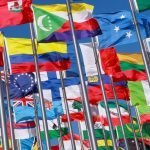“License? Freebanders don’t want no stinking’ license!” Freebanders don’t have a license for these frequencies. CB radio principles, channels, modes, and frequency bands vary especially really just a little from nation to nation. 99.99% of the time, the governments don’t put in drive radio principles or principles on the usual free band frequencies besides any character makes use of a immoderate vigour linear amplifier to create radio interference for local television sets or different offerings. Enforcement most of the time gave up on this part of the spectrum an extraordinarily very long time in the past, and it is more normally than not viewed “sacrificial spectrum” within the DX “wild west of radio”. Nonetheless, there are some frequencies on this spectrum that clever freebanders preclude. For illustration, between 28.000 MHz and 29.Seven-hundred MHz, the 10 meter ham band, they are almost certainly to be tracked by the use of ham operators and advised to the authorities. In United States, many CB truck drivers don’t heed freebander frequency caution; they most likely talk on 28.085 MHz (commonly referred to as “immoderate 19”) where they are without difficulty tracked down by way of hams. Their trucking firms are often fined by means of FCC, and the drivers get fired. Most free band operators seem down upon that type of carelessness.
Conclusion:
Many persons who have started in novice radio when they’re younger have long gone on to triumphant careers in amateur radio or electronics. The combo of experimentation and challenges the ardour offers imply that many employers show up for radio amateurs in choice to different candidates. This is notably actual with the booming growth in the mobile phone industry where radio frequency capabilities are at a top rate.




